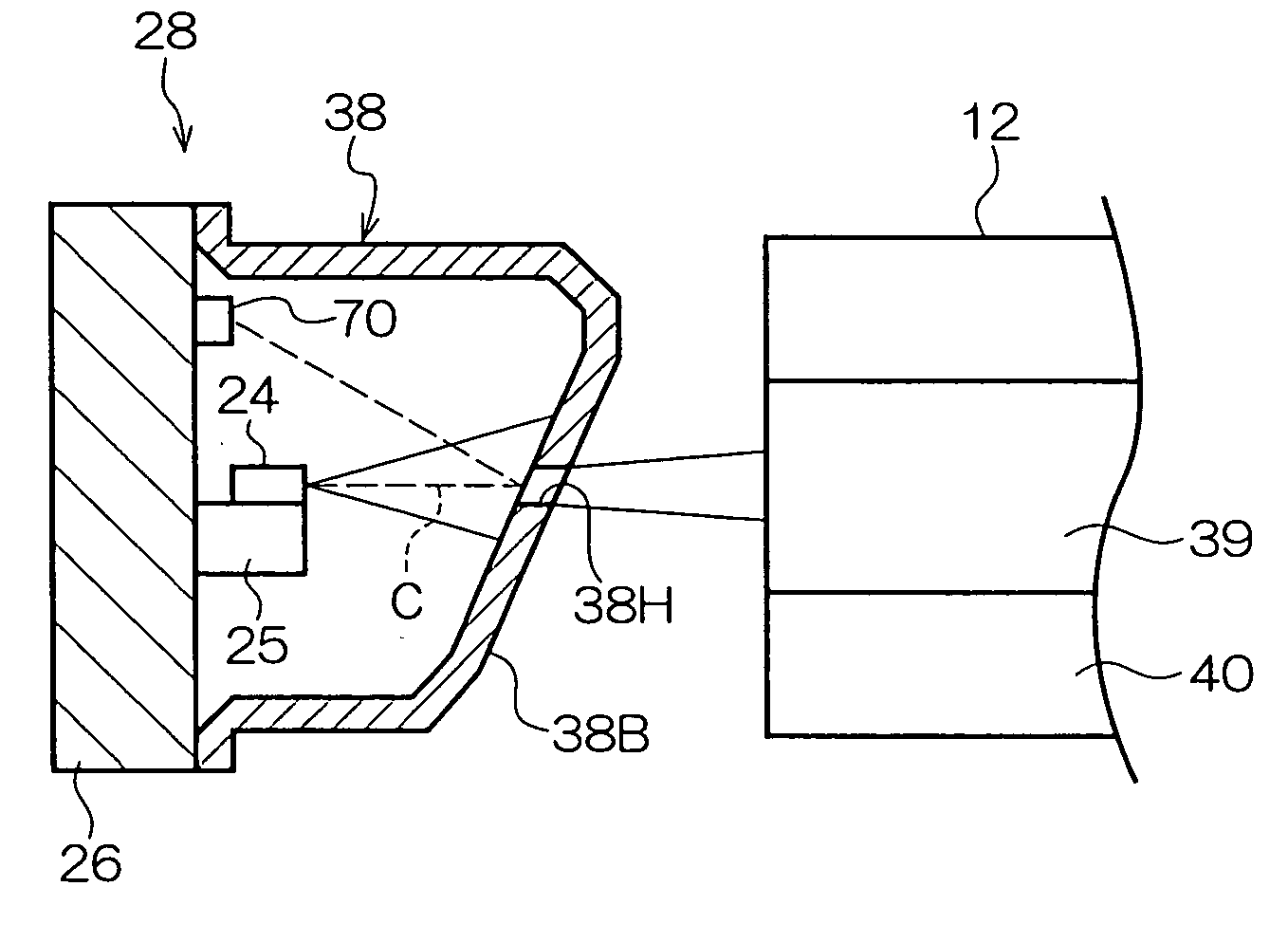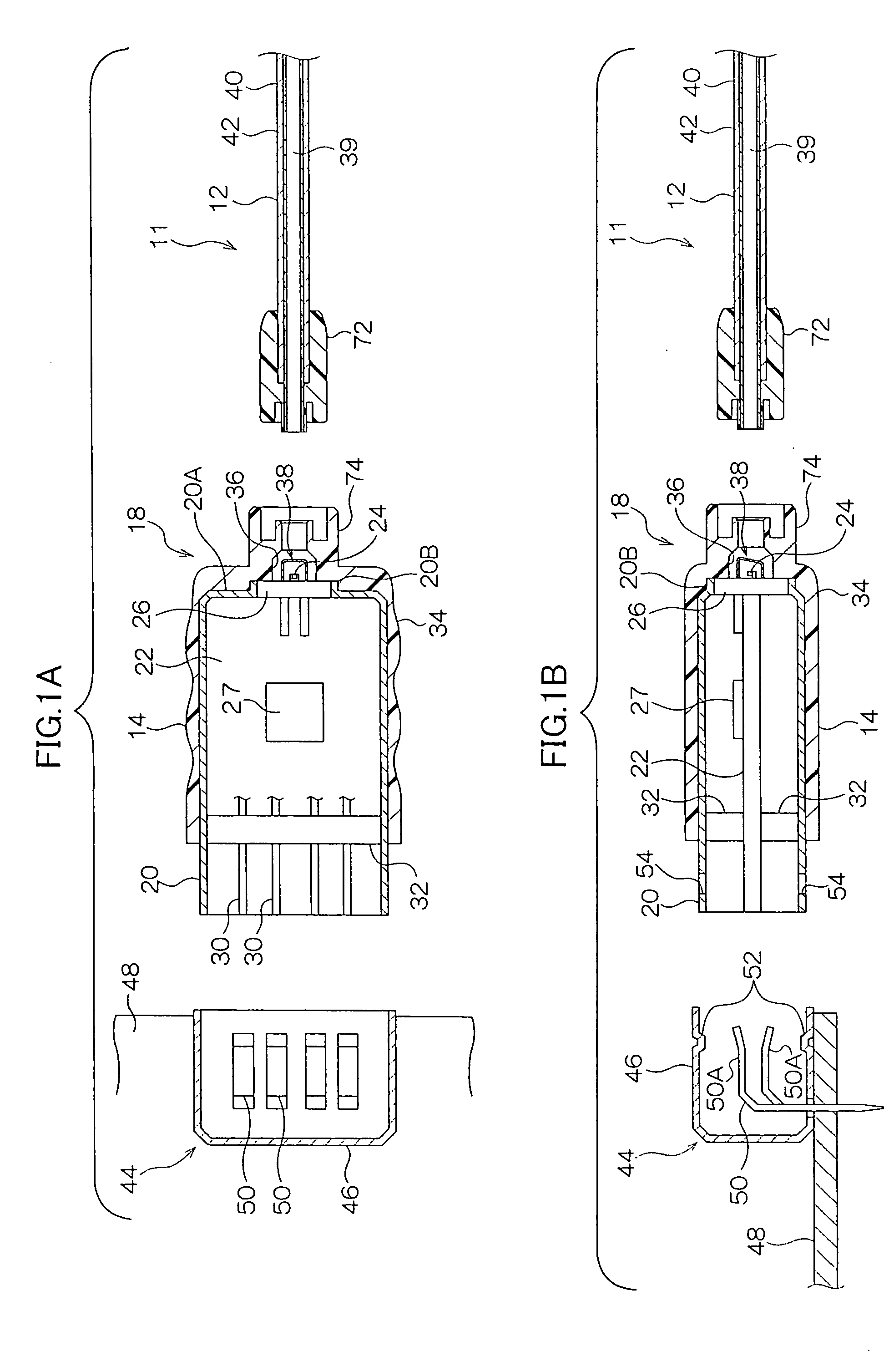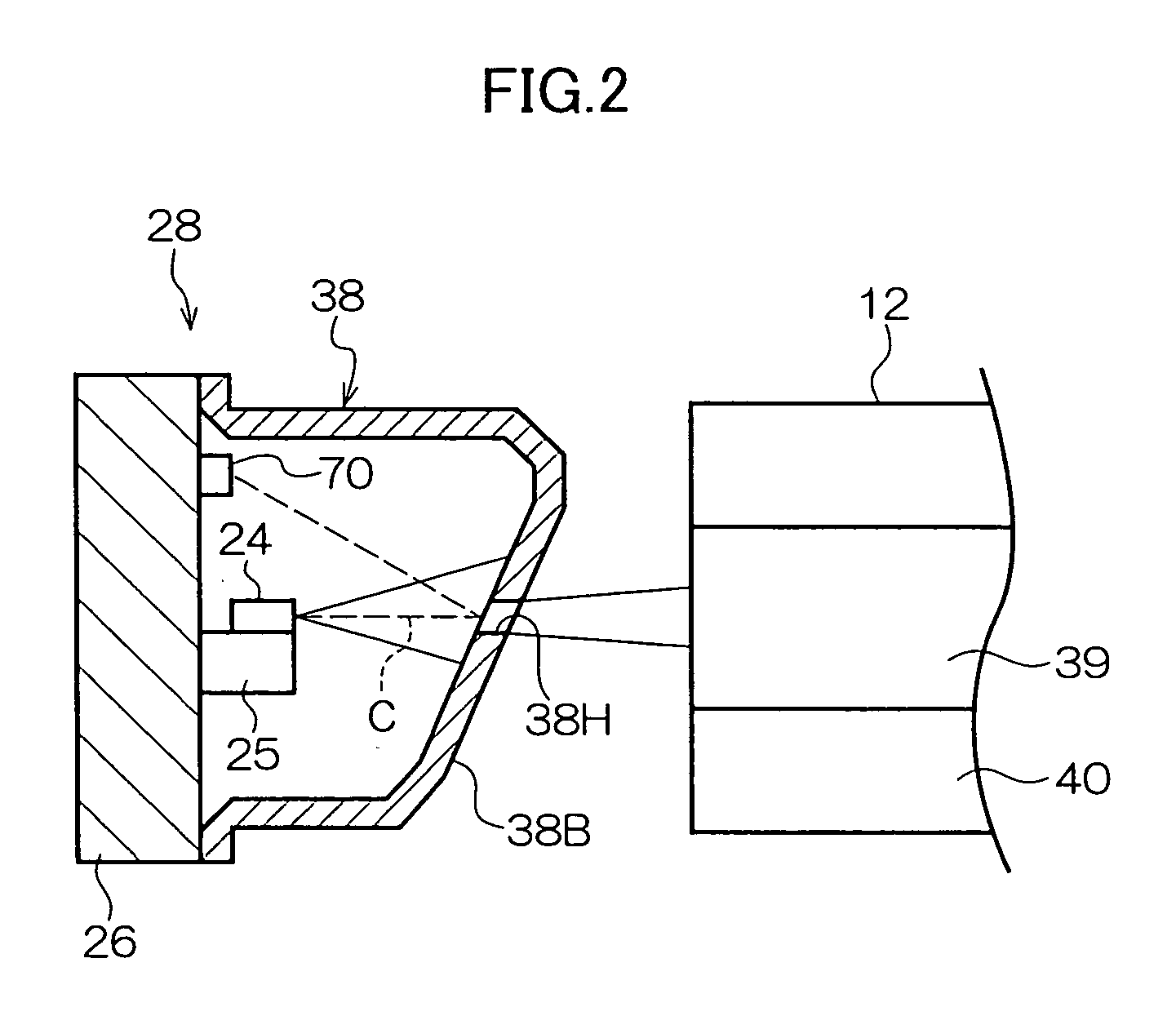Optical signal transmitting device
a technology of optical signal and transmission device, which is applied in the direction of electromagnetic transceivers, semiconductor laser structural details, semiconductor lasers, etc., can solve the problems of difficult inability to achieve high-speed modulation of gbps band, and general 100 mhz frequency band, etc., to achieve high optical coupling efficiency at the optically coupled portion, the effect of increasing the optical coupling efficiency with respect to optical fiber
- Summary
- Abstract
- Description
- Claims
- Application Information
AI Technical Summary
Benefits of technology
Problems solved by technology
Method used
Image
Examples
example
[0085] In this example, the laser light is emitted under the following conditions and transmitted by the GI-POF 39 in the optical signal transmitting device 18 of the first embodiment. [0086] Type of semiconductor laser diode: end-surface emitting semiconductor laser diode [0087] Output of semiconductor laser diode: 4.4 mW [0088] Divergence angle of laser beam from semiconductor laser diode: maximum of 30°[0089] Wavelength of laser beam: 650 nm [0090] Divergence angle after passing through light limiting member: about 7°
[0091] As a result, in the present example, the affect of relaxation oscillation is reduced, high-speed modulation at 1.25 Gbps is possible, and leakage of the light beams to the outside can be kept within a sufficient safe range. Moreover, the optical coupling efficiency becomes high and the light loss becomes small because the angle of incidence when the laser beam is made incident at the GI-POF 39 becomes about 7°, which is narrow. The intensity of the light after...
PUM
 Login to View More
Login to View More Abstract
Description
Claims
Application Information
 Login to View More
Login to View More - R&D
- Intellectual Property
- Life Sciences
- Materials
- Tech Scout
- Unparalleled Data Quality
- Higher Quality Content
- 60% Fewer Hallucinations
Browse by: Latest US Patents, China's latest patents, Technical Efficacy Thesaurus, Application Domain, Technology Topic, Popular Technical Reports.
© 2025 PatSnap. All rights reserved.Legal|Privacy policy|Modern Slavery Act Transparency Statement|Sitemap|About US| Contact US: help@patsnap.com



